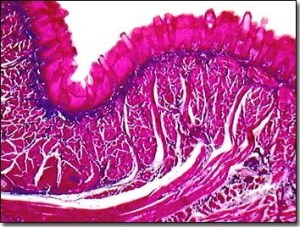Worried about getting old? It’s simple. Eat less and you could live longer. This is the view held by an increasing number of medical professionals, scientists and nutritionists around the world including experts at the Calorie Restriction Society. These beliefs are based on extensive research which suggests that caloric restriction (CR) can actually slow aging and reduce the incidence of disease, ultimately prolonging life!
CR has been investigated by gerontologists for more than 60 years and provides the only intervention tested to date in mammals (typically mice and rats) that repeatedly and strongly increases maximum life span while retarding the appearance of age-associated pathologic and biologic changes. Although the large majority of rodent studies have initiated CR early in life (1-3 mo of age), CR started in mid-adulthood (at 12 mo) also extended maximum life span in mice. There is evidence to suggest that age-associated increases in oxidative damage may represent a primary aging process that is weakened by CR. With regards to testing on primates, recent studies in monkeys subjected to CR support the notion of human translatability.
CR should not be confused with regular weight loss diets. In fact, weight loss is regarded as a side effect, not a goal. The main objective is to achieve a longer and healthier life by eating fewer calories, while maintaining a regular balance of vitamins, minerals and other essential nutrients. Following this diet brings about a reduction in the white adipose tissue mass and this has been proposed as a principal factor in longevity.
The pathways influenced by caloric restriction
The proteins altered by CR seem to be associated with several different cycles, including the glucose and lipid metabolic pathways which were consistent with increased lipid biosynthesis. The expression of proteins involved in the production of Oxalacetate and NADPH and in lipolysis and lipid biosynthesis was enhanced. In addition, certain insulin receptors were also increased by CR which was consistent with a higher response to lipogenic stimuli.
Other protein expression changes induced by CR gave improved protection against oxidative stress by halting the age-associated reduction in the levels of several antioxidant enzymes and decreasing the levels of stress-induced proteins.
Both CR and aging also changed the expression of proteins involved in the cytoskeleton, iron storage and energy metabolism as well as other proteins with currently unknown functions in adipose tissue.
The CR-induced changes are in line with reported microarray studies and will help to understand the molecular mechanisms behind the lifetime extension and the suppression of the effects of aging.
In the long term, the results could also lead to the identification of novel biomarkers of aging and possible targets for mimetics of CR that could provide the same outcome: an extended lifespan, without having to follow a rigorous and controlled diet.
Read more about calorie restriction and the molecular pathways that slow aging, improve health
Maria Konovalenko
SCIENCE FOR LIFE EXTENSION FOUNDATION
http:/mariakonovalenko.wordpress.com/
maria.konovalenko@gmail.com




